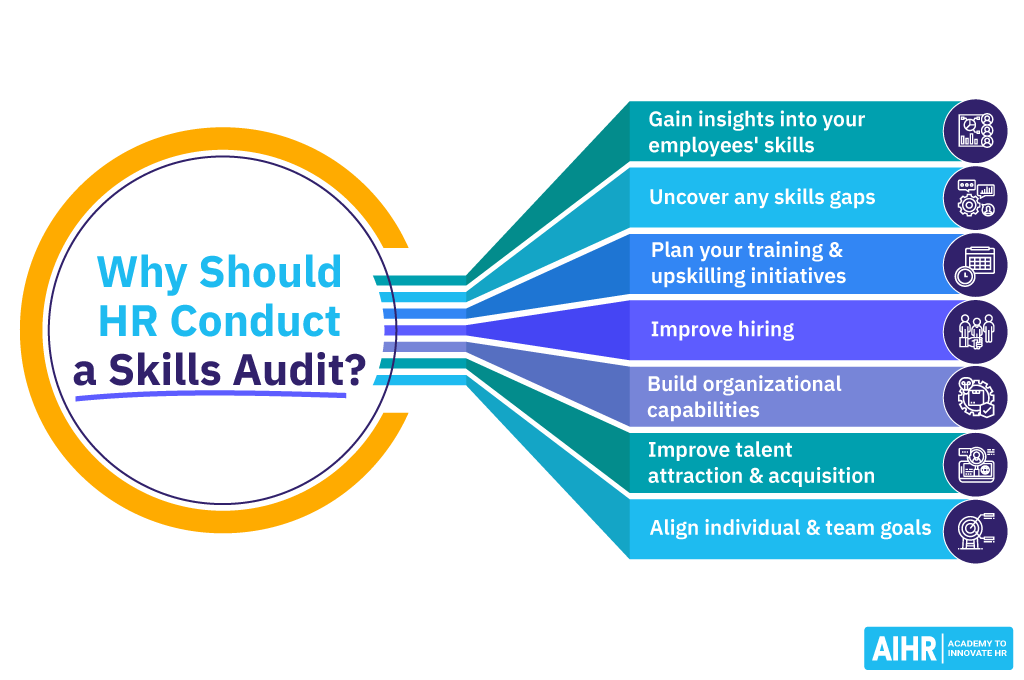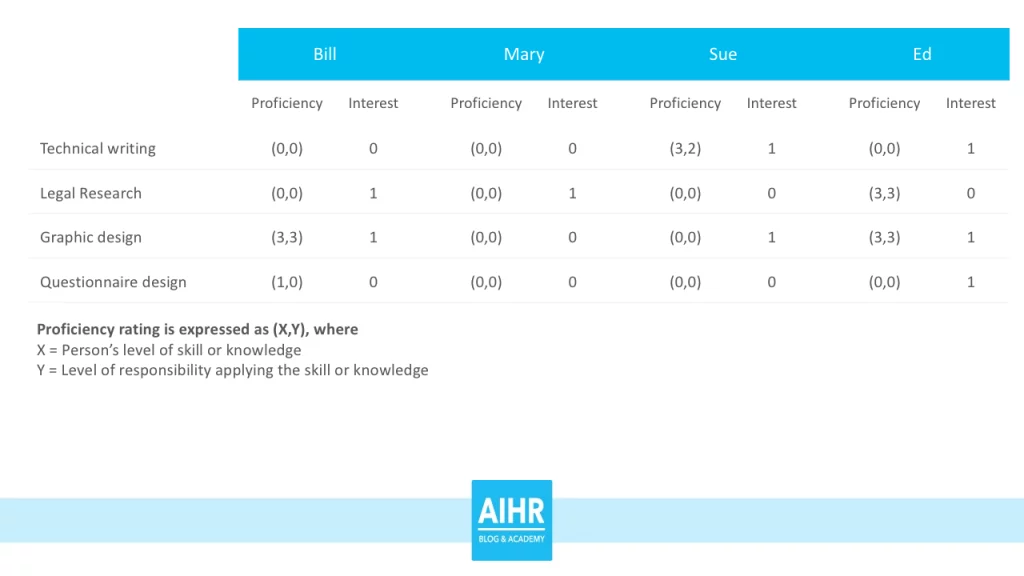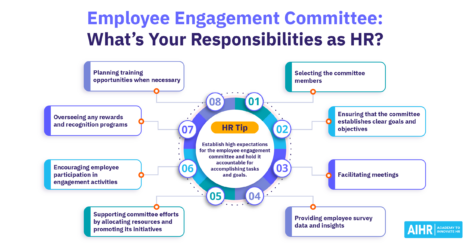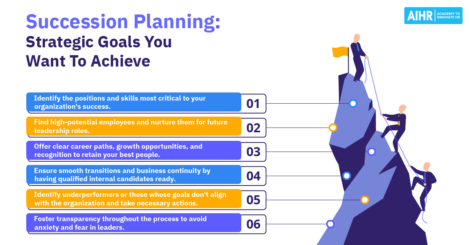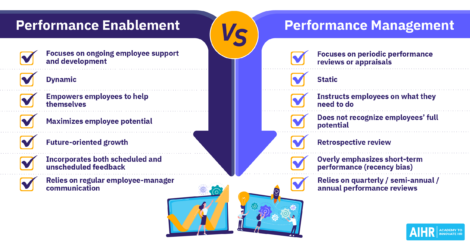How to Conduct a Skills Audit at Your Organization

When talent is scarce, conducting a skills audit helps you to gain a thorough understanding of what skills you have in your organization and which you need to develop or hire for.
Contents
What is a skills audit?
What are the types of skills audits?
When should you conduct a skills audit?
Why do organizations conduct skills audits?
10 tips for a successful skills audit
Digitization disruption, the recent changes in how we work, and how businesses are structured impact how organizations encourage innovation while also ensuring business-as-usual continues. This requires organizations to maintain and enhance their current workforce skills and bring in much-needed new skills needed to adapt to these shifts.
What is a skills audit?
A skills audit assesses an employee’s skills and capabilities to identify potential knowledge gaps or growth opportunities for an individual. On an organizational level, a skills audit assesses the skills of everyone in the organization to act as a ‘heat map’ for areas of strengths and weaknesses of the existing workforce. There are two types of skills audits, which we will explore later in the article.
Typically, HR conducts a skills audit via a questionnaire or an interview. However, you can use various other sources for information (such as historical documents, learner management systems, certificates, performance history, etc.).
A skills audit offers tremendous benefits for an organization in identifying which skills are available in the company and which aren’t. Often, employees have skills that the organization isn’t even aware of and might not have been harnessed.
A skills audit is also helpful when the company is changing, such as during restructuring. Consider a bank that is adopting a new technology that will replace the role of bank tellers. The bank teller skills will no longer be needed. However, the bank will need employees with technology skills in the future.
A skills audit can help assess what skills already exist and whether these skills are relevant to other business areas. Similarly, new skills are needed if a company expands its offering or enters new markets or regions.
View the skills audit as a continuous process, not a once-off exercise, as organizations are constantly in flux. This essential tool should be a part of any HR team’s strategic focus instead of being conducted merely for the sake of it. Additionally, always align your skills audit with the business objectives and strategy.
Note for HR professionals: Make a clear distinction between your skills audit and the training needs analysis to avoid duplication of work.
What are the types of skills audits?
As mentioned earlier, HR can conduct 2 types of skills audits:
A personal skills audit is used to understand the individual’s level for a specific or general skill. It highlights any skills gap an employee may have.
Personal skills audits are helpful for individuals when identifying what job is best suited for them, with a career change, or as part of a personal development plan. You can also use information from a personal skills audit in a group skills audit.
A group skills audit involves auditing all employees within a team or the organization. It is generally used to create an inventory of employees’ skills in the workplace.
When should you conduct a skills audit?
Your team is not the same as it was 5 years ago; or even 1 year ago. Exits, new hires, and changes in ways of work influence skills acquisition or needs. So it is ideal to conduct a skills audit when:
- A new role is created: HR will need to identify and clearly define new skills for a position and the optimal characteristics for the new hire.
- An employee changes their role: A personal skills audit can identify an individual’s strengths or weaknesses to help them succeed in their new role.
- An employee changes departments: A skills audit should also be conducted when an employee makes a lateral move to a different department to ensure the skills are still relevant.
- A new project requires special skills: Identify what skills are needed to execute a new project and whether project members have the required skills.
- As part of performance management: A good performance management program seeks to develop employees. A skills audit will be beneficial to evaluate whether an employee is underperforming or exceeding expectations.
A skills audit requires time, effort, and good coordination. For the best result, use technology to summarize and analyze the data of a skills audit.
Why do organizations conduct skills audits?
To understand the skills that your organization has
Gain a better understanding of what skills your employees’ skills, where the various skill sets sit within departments, etc.
Employees may have a range of skills unknown to the organization, such as additional skills acquired during studies, previous work experience, or outside areas of interest in which they may be involved. The organization can leverage these untapped resources.
To uncover skills gaps
87% of organizations know they have a skills gap, or will have one within the next few years. A skills audit helps you identify whether skills are lacking within specific employees, teams, departments, and the organization. HR and management are better equipped to make improved strategic decisions when deploying projects or budgets for particular projects and teams.
A skills audit is also helpful when forecasting. For example, a business will utilize artificial intelligence in their products within the next 5 years. The organization can begin earlier to identify skills gaps related to AI, such as data science, data management; machine learning; coding, etc., and deploy programs to reskill employees.
To assist in your training and upskilling initiatives
Information obtained from a skills audit can be highly beneficial in informing HRs training and upskilling programs. Use this data to improve your existing initiatives or focus on designing priority skills training programs.
To improve hiring
One of the benefits of the information obtained from a skills audit is in improving your hiring. HR will be better informed about who to hire to complement the team based on these insights.
This data enables you to make your hiring more targeted. It won’t make sense to hire more of the ‘same’ if you need someone with a different skill set.
To build organizational capabilities
Each organization has developed its unique organizational capabilities (OC) – those intangible but strategic assets that enable it to deliver on business strategy and continue to satisfy its customers.
Employee skills and capabilities are essential to organizational capabilities, particularly within its operational capabilities, where a company can align skills and processes to operate within its markets. These attributes work in combination and emerge over time to become the company’s competitive advantage.
Identifying the skills that contribute to these operational capabilities is key to building and maintaining a business’s competitive edge.
To align individual and team goals
In the past few years, organizations have experienced rapidly changing business environments resulting in skills once relevant last year becoming obsolete or nonessential the next. Take, for example, an events manager hired at the end of 2019, faced with the sudden need to set up and run online events.
A skills audit will enable HR to identify the skills required for the adapted role and provide the necessary training to upskill the individual or team in line with the new business urgencies.
10 tips for a successful skills audit
1. Be clear about your objectives
The time, energy, and resources needed to conduct a skills audit are considerable. So, treat the skills audit as a project with stakeholder input, a project manager, clear key responsibilities, a budget, and well-defined objectives.
Take your business’s challenges, opportunities, and goals into consideration:
- What challenges are you facing now and in the near future?
- What are your organization’s opportunities for growth?
- What do you want to achieve?
Knowing the answer to these will enable you to determine which skills to focus on in your audit.
Involve the right stakeholders when developing objectives to ensure buy-in and involvement from the very beginning. This is not an HR project but rather a business imperative supported by HR. Engage with stakeholders in all departments and sub-departments within the organization (not only front line but also back-end such as operations, IT, finance, etc.)
2. Define the scope
Avoid defining a broad scope for your skills audit. There is no benefit to auditing every single skill within your organization. Knowing which employees can use a typewriter will probably not be of any help to your business. Instead, define the scope of your audit based on your organization’s strategy and then break these down into categories. For example:
- Technical skills (broken down into subcategories)
- Leadership skills (based on your leadership pillars)
- Interpersonal skills.
Include in the scope the type of information you will collect, for example:
- Certificates
- Performance review information
- Managerial reviews.
3. Use a competency framework
Use a competency framework to assess skills, as this ensures consistency across the organization and over time. A competency model is the aggregate of competencies relevant to a specific role or function. This competency model gives HR a framework for your skill gap analysis and upskilling.
Creating a competency matrix (or skills matrix) will also assist in mapping the needed skills for a team or project. This grid lets you visualize the available skills and competencies versus those required in a team.
4. Decide on an assessment method
You can use various ways to collect the information for the skills audit. Use a combination of the following to gain good insights:
- Conduct one-on-one interviews – Ask employees set questions to understand where their strengths and weaknesses lie. Use a consistent approach for every employee so that you can have a group-wide understanding of the skills. This can be time-consuming but effective.
- Provide a self-assessment survey – You can send this to employees to complete. Employees rate themselves on a scale to assess their level of skills. Provide definitions and examples so that employees can answer honestly. A self-assessment survey relies on employees to answer honestly.
- Collect historical information – You can collect existing information about employees, such as previous training completed, history of performance, certificates, college or university degrees, etc.
- Give a formal skills test – Conduct a skills test to assess required skills in the organization.
5. Start small
If you’re unsure about how helpful a skills audit would be, or you don’t have much time, start small, e.g., in one department or team. You can expand the audit to other departments and teams based on these results.
6. Ensure you’re legally compliant
Ensure that you have the right to collect data and the necessary infrastructure to protect employees’ personal data. Data should only be collected under strict conditions and used for its purpose in accordance with region-specific laws. Organizations that commit to a skills audit must ensure that the information gathered won’t be misused and must always protect employees. As a minimum standard:
- Only use the data for the purpose it was collected
- Don’t collect unnecessary information
- All data must be up to date
- Accessible to employees and allow them to correct information if it is incorrect
- Check all country regulations if you’re doing this outside your region or country.
7. Collect and analyze the data
There’s a logical sequence you can follow when collecting employee data:
- Inform employees about the skills audit.
- Collect the data in the agreed collection methods. If you’re using interviews, train interviewers in the correct techniques.
- Train employees and managers to use the system if you’re using a continuous data collection method. For example, a learner management system that needs to be updated by employees if they acquire a new skill.
8. Use the insights to create hiring, training, and upskilling plans
Skills audit results help you design short- and long-term hiring, training, learning, and upskilling interventions. In the short term, you can enroll your employees in, for example, a workshop to upskill software skills. In the longer term, you can develop ways to better test for the required skills in the selection process when hiring or improve your new employee training.
Additionally, an assessment report can be created as part of the skills audit. This report could summarize:
- Any unused skills (and if they’re valuable for now or into the future)
- Potential redeployment of employees because of their skills
- Note any glaring skills gaps organization-wide
- Any urgent skills.
Filter this information to hiring managers and the recruitment team to ensure that any current interviews and recruitment processes also fill the need for the skills gaps identified during the audit.
9. Build and maintain a skills inventory
An up-to-date skills inventory provides a better overview of how your employees should develop and grow and can help you to create a succession plan, and bridge skills gaps before they become a problem.
10. Audit the HR department’s skills
Don’t skip over the HR department when conducting your skills audit. Auditing the existing HR skills will help you spot and fill the gaps within your HR team to strengthen the core competencies, and future-proof HRs skillsets.
Your HR team will be at the forefront of conducting the audit, so it is the ideal team to start your audit with before rolling it out to the rest of the departments. This will ensure that the team conducting the audit has the necessary skills to perform a successful audit (e.g., interview skills, data collection, and analysis, conflict management, etc.).
To conclude
A skills audit helps you make data-driven hiring, training, and upskilling decisions. The tool will help you develop skills relevant to your employees and your organization, helping your business build the operational capabilities needed to establish its competitive advantage.
Weekly update
Stay up-to-date with the latest news, trends, and resources in HR
Learn more
Related articles
Are you ready for the future of HR?
Learn modern and relevant HR skills, online





